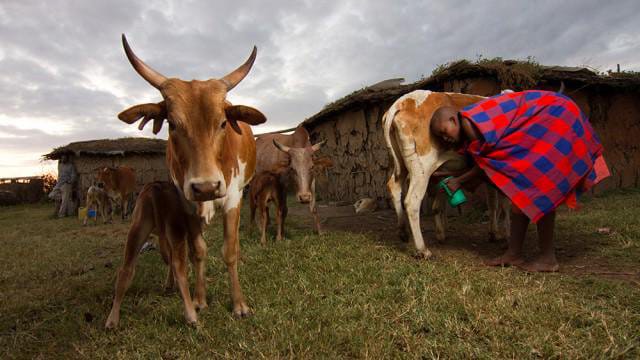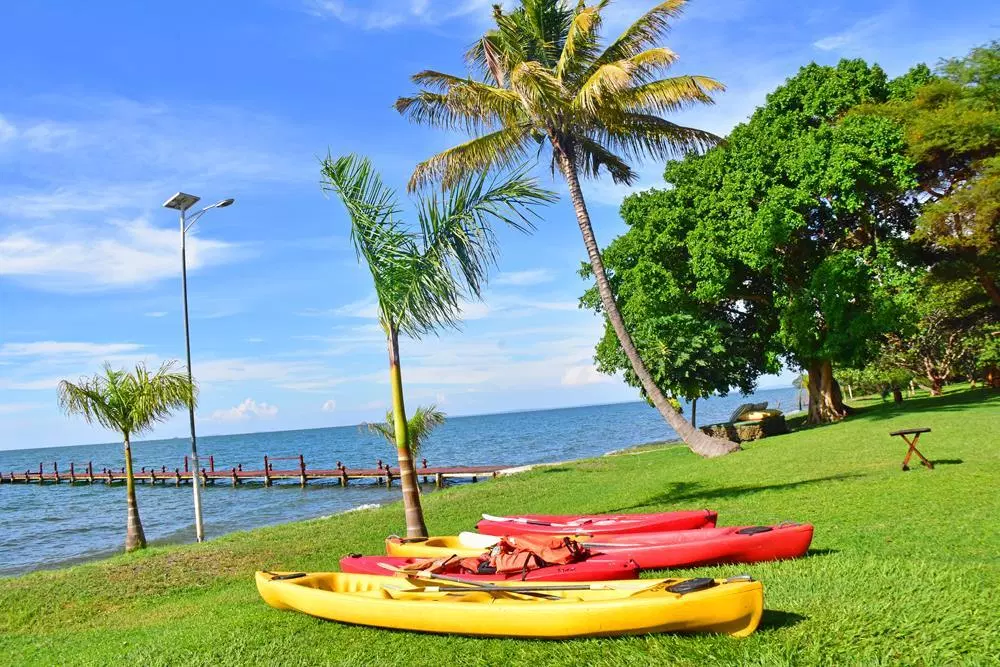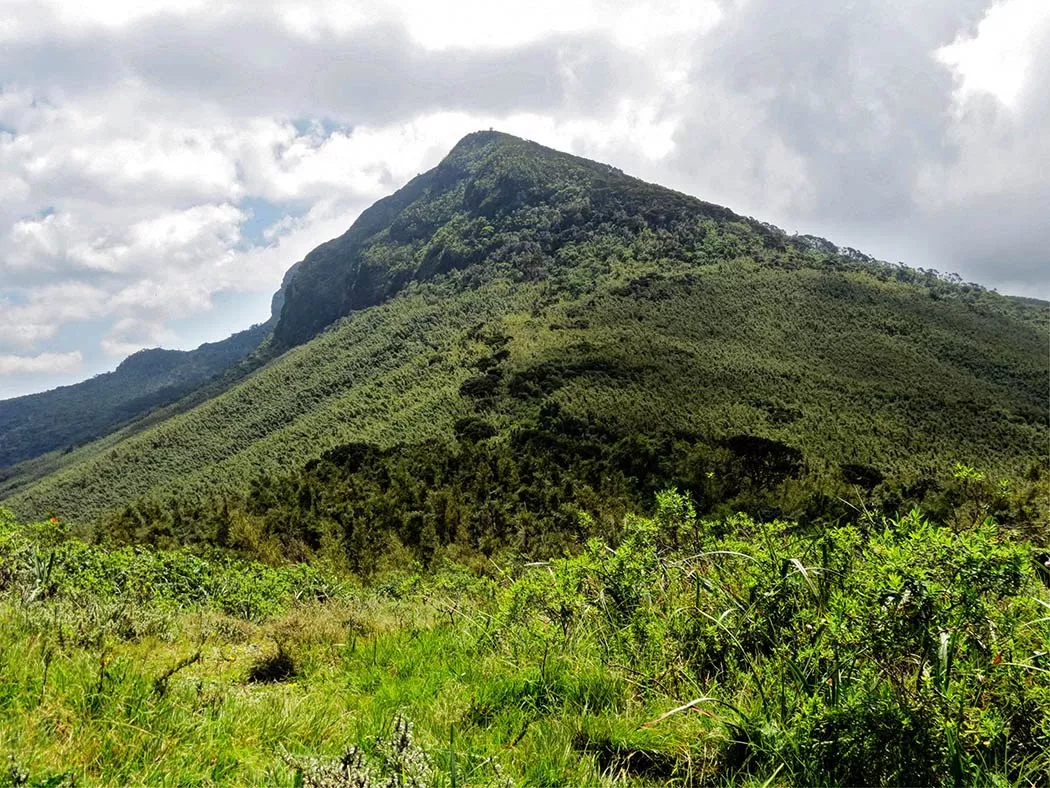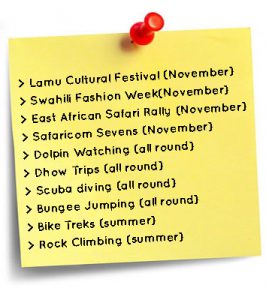Cultural events, people and society
One of the major highlights of travelling in Kenya is experiencing its immense cultural diversity. Kenya is a multi-cultural society, reflecting patterns of regional diversity since the origin of early man in the cradle of mankind. Travelling has always been about discovery, and it is through visiting other countries that we learn about the world. Tourism is not just a financial exchange; it is about the exchange of experience and learning about new places, faces and people. The best way to understand another culture is to experience it firsthand, and this is the true value of the tourist trade. Kenya is no different.
While many tourists visit Kenya to experience our famous wildlife or beaches, for many more the local culture makes their stay special. A trip to Kenya is about more than just wildlife or scenery — the real face of Kenya is found among the combined faces of many cultures. It is the people who bring the destination to life-each landscape has a different cultural significance to a different community, and the wildlife has long been an essential part of traditional culture.
Kenya has 42 cultures, countless languages and dialects and one of the most mostly diverse social tapestries on earth.
The earliest homo sapiens (modern man) were hunters and gatherers-khoisan people akin from the bushmen seen from the remnants- the Ogiek, Dorobo and Boni. Waves of migration followed. The cushites from Ethiopia, Nilotes who moved south from the Nile and Bantus who moved in from the south and the West. The Cushitic speaking people account for 3% of the population. They include: Boran, Orama, Dassenich, and El molo, Rendile, Gabra and Budje. Around 65% of the population is bantu speaking among them kikuyu, kamba, luhya, kisii, taita, embu and pokomo. The nilote speakers account for 30% and comprises of the luo, kalenjin (which comprises of the kipsigis, nandi, marakwet, pokot, tugen and sabaot), maasai, samburu, turkana and ichamus. They all make up the 42 tribes in Kenya (some sources cite over 70 tribes though many are sub-tribes). From AD 700, the Arabs plied their trade in the Kenyan coast intermarrying with the local people forming the Swahili. European immigration started in the 15th century with the Portuguese settlement at the coast followed by a period of exploration in the 18th century culminating in the formation of the British East Africa Protectorate in 1894 (Kenya and Uganda) and superseded by separate Kenya colony in 1920. Europeans pre-dominantly settled in the cultural highlands, known as the white highlands. Asians initially brought in by the work on the railway, settled in the main business centers- Nairobi, Nakuru, Eldoret and Kisumu. After independence in 1963, further nationalities have been drawn to Kenya, working in the diplomatic or aid sectors and at a certain period, refugees have filtered into the country from Uganda (during the idi amin era) and in more recent years from strife stricken/torn regimes of other neighbouring countries.
At Koobi Fora, some of the earliest evidence of human habitation on earth has been found, while the streets of Lamu echo with the history of centuries of sea trade, while Mt Kenya is a biosphere reserve that combines the respect for a traditional symbol of creation and the need to conserve our environment for the future.
Many opportunities are available to travel through Kenya is to experience a unique cultural mosaic as old creation. Meet the Swahili sailors of the Coast, visit the thorn-enclosed Villages of the Maasai in the south, walk alongside Samburu warriors in the northern wilderness or fish with the Luo, master fishermen of Lake Victoria, in the west. Anywhere you travel in Kenya, you find new and fascinating cultures, and cultural events.
From the annual Malindi celebrations in Lamu and the bullfights of Kakamega to the Mombasa Carnival, there are enough festivals, events and ceremonies to fill a calendar and ensure that there is always something new and exciting to experience anywhere, anytime. Bull-fighting is a recent tourist attraction in western Kenya and is unique to the country. The event lakes place early in the morning and those who attend have the opportunity to visit the Kakamega Forest, and see the ‘Crying Stone.
But there is a greater value in cultural tourism. At a time when racial and religious conflicts threaten the world, it is only through a better understanding of human cultures and beliefs that the global community will come together and achieve lasting peace.
Language
English is the official language and Kiswahili (often shortened as Swahili) is the national language. In addition, numerous tribal languages are spoken. A pure form of Kiswahili is dominant at the coast while inland its lingua franca. English is mainly spoken in urban areas, but spasmodic elsewhere. Its not uncommon for Kenyans to speak English and Kiswahili together (Sheng) and a couple of tribal languages. At the coast, many have a good grasp of German, French and Italian.
Population
Kenya’s population has increased dramatically since 1960’s when it stood at 8.2 million, and the population growth rate is beginning to bottom out. Kenya has one of the fastest rates of population growth in the world- in just 80 years, the population has risen from 3 million to 30 million. Settlements are unevenly distributed around the country with the arid north being sparsely populated. About 25% of the total is concentrated in the large cities of Nairobi, Mombasa, Nakuru and Kisumu. Most people live in the high rainfall, arable areas of the Central highlands and Western Kenya. In the north and east, 20% of the population lives on the 80% of the land. Of the ethnic mix, 20% are kikuyu, 14% luhya, 13% luo, 13% kamba, 12% kalenjin, 6% gusii, 6% meru and 15% other Africans while Asians, Arabs and Europeans account for about 2%.
Events
The first millennium saw the intermingling of the Arabs and Persians with the tribes on the coast which gave rise to the Swahili culture. The 19th and 20th centuries witnessed the arrival of white settlers from Europe and indentured labour from India. Some indigenous communities retain a way of life in scattered settlements that has changed over the centuries. Each group has its own political and social organization and deep sense of kinship that governs one’s behavior, rites of passage and marital customs. Many other ethnic groups have adopted a western way of life which has resulted to a multi-cultural society and while Africans dominate, there are pockets of Indians, farmers of European descent and a multi-national community of business. East Africa, generally Kenya’s constitution guarantees freedom of worship and a majority of Kenyans are actively religious. In Kenya, Christianity was introduced by the early missionaries in the 19th century and today, some 70% to 80% of the population is Christian. Most are regular church goers and protestant, Anglican and Roman Catholic Churches are prolific across the country. Islam was introduced during centuries of trade with the Arab peninsula and the people on the coast are mainly Muslim. There are also substantial amounts of Hindus and sheikhs amongst Indian population in the urban areas.
CULTURAL SIGHTS AND ORNAMENTS.
Cultural tourism in kenya – culture & heritage.
Make Kenya your next cultural tour destination. Kenya is home to 42 different, unique cultures. Also inhabited by Europeans, Asians, Indians and nationalities from different parts of the world, the different cultures that have come together in Kenya form our identity. You could choose to stay in the villages and experience untainted traditional ways of life or experience urban culture in Kenya’s cities, where the fast life is never fast enough.
Visitors on their way to Maasai Mara game reserve and Amboseli national park will discover maasai manyattas on the roads, whose people still follow the traditional way of life.
On the coast, north of Mombasa, Ngomongo village is a collection of working communities complete with crops and animals.
Visitors to the north will be able to meet the semi nomadic people, some of whom act as guides on camel treks and the pokot people whose homesteads and market can be visited from marich pass field studies centre. One can visit the Ameru, Aembu, Gikuyu and Kamba in their original home steads.
Cultural tourism in kenya – urban culture.
Cultural Tourism in Kenya: Fashion – Nairobi Fashion Market
The Nairobi Fashion Market is an outdoor shopping event that brings together over 100 fashion designers, retailers and buyers. This is usually a platform to showcase latest trends of clothing, bags, jewelry, accessories, make up, hair and beauty products, homes and other products. On a weekend in Nairobi, this market gives you the opportunity to shop for good quality products, as you sample what’s trending in the Kenyan fashion scene as you enjoy the sights sounds and beautiful people of Nairobi. Everything is displayed with that perfect touch of class because there is a story behind it.
With security being ensured, the Nairobi Fashion Market presents the absolute opportunity to get away from the wild, the beaches and out of your hotel room to feel the city of Nairobi and the warmth of its people in the market. You are sure to get entertained by good music too. The fashion sense of Nairobi is authentic and speaks only for itself so come and buy something and compare with the fashion market at home.
Cultural Tourism in Kenya: Maasai Market
Slightly similar to the Nairobi Fashion Market is the Maasai Market. For the ultimate breath of culture and color, the Maasai Market gives you the opportunity to buy authentic African art, hand- crafted beaded jewelry and clothing as souvenirs, gifts, best gun safes, and even decorating material you could use for your home back in your country. At very affordable prices, you can purchase as many products as possible and at the same time promote local handicraft businesses.
As seen below, the venue for the open air Maasai Market keeps of changing with the days of the week so feel free to find a day and come spoil yourself.
Cultural Tourism in Kenya: Coffee dens
Taking coffee is one of the oldest activities that perfectly connects itself to social activity across many cultures of the world. And Kenya is not to be left behind. Since 1950, international coffee shops have been set up in different parts of Kenya, roasting different types of coffee for its local and international coffee lovers. Over time, in Kenya, coffee dens have slowly become great joints for friends, family, expatriates and corporates to meet and interact over a cup of their favorite coffee.
Modernity has set in and coffee shops have upped the social activity with technology. To add to the serene, stylish décor, relaxing music in the backgrounds, coffee shops in Kenya now have free Wi-Fi that you can use to communicate with friends and family at home as you dine in home grown coffee.
Cultural Tourism in Kenya: Visual arts
Get a feel of the real Kenyan culture, history, modernity, evolution and family life as reflected in the visual arts. Over the years, young Kenyans have invested in awesome theatrical performances and films that showcase the everyday life of a Kenyan, excellent photographic and artwork exhibitions are on display in different cultural centers in the major cities. Exceptional displays of creativity such as spoken word story telling festivals, poetry and paintings bring the picture of Kenya to large audiences.
Visual arts lovers need to get closer to Kenya’s massively talented artists and discover a reflection of the real Kenya, because the real Africa is as reflected by the real Kenya.
Visual arts is not only in the organized environment of a photographic exhibition but out on the streets of Nairobi, art displays in the most fantastic ways. If get the chance to take a leisure walk down the streets of major cities in Kenya you could come across excellent displays of graffiti art done by the daring and creative minds of young artists. As strongly opinionative as they will appear, the use of color and cartoon work will wow you.
Cultural Tourism in Kenya – Village Visits
For a long time, many people have identified the cities, beaches and wilderness of Kenya as being some of the best in all of Africa. Now there is an alternative! Villages in Kenya are the perfect places to get introduced to local culture and lifestyle. Why not try our unspoiled Kenyan villages, spend days in the homes of ethnic communities learning and getting involved in their daily lives. The village experience in Kenya is a reflection of the purest forms of traditional culture of the 42 tribes of Kenya. You could travel up North to the lake shores of Lake Turkana, at the El Molo villages and understand the mystery and strange lifestyles of the smallest tribes of Kenya, or Western Kenya to the Alego Nyangoma Kogelo village, ancestral home to the first black President of the US, Barack Obama. Better yet, the historic ruins of Swahili villages, Gede ruins down South.
Nairobi- Bomas of Kenya
Here, they showcase tribal dances and music and has mock-ups of typical villages and home-steads.
Kenya is also proud to be home to 6 unique world heritage sites identified by The United Nations Educational Scientific and Cultural Organization (UNESCO). Clustered in different categories, these sites have been identified precisely because of their cultural, historical, natural and archaeological value. These world heritage sites combine to form the ultimate quintessence of the nation.
Fort Jesus, Mombasa
This fort is one of three cultural UNESCO World Heritage Sites in Kenya. It was inscribed into the list in 2011 as this 16th-century fort was designed to guard the Old Port of Mombasa. This fort is the only one that is maintained by the Portuguese in the Swahili Coast. Hence, it is also a symbol of how Western power successfully established their influence on the trading activity in the Indian Ocean. The architecture of the fort itself was important to the cultural heritage of the site. Aside from showcasing Renaissance architectural style, the labor, materials and masonry techniques are inspired by the local Swahili people. Meanwhile, the fort is considered as one of the best military fortifications during the late Renaissance era.
Lamu Old Town.
The Lamu Old Town is considered as the best preserved and oldest Swahili settlement in the coastal strip of East Africa. This town has been continually inhabited for 7 centuries. Even today, this town still has some of Kenya’s most conservative societies.Lamu Old Town serves as the cradle of civilization for the Swahili people. This is commemorated through the many cultural festivals and Islamic celebrations in the town. In 2001, it was added to the list of UNESCO World Heritage Sites in Kenya.
Sacred Mijikenda Kaya Forests .
The Sacred Mijikenda Kaya Forests in Kenya is another entry to the list of UNESCO World Heritage Sites in Kenya. It is composed of 11 forest sites that are located along the coast of fortified villages by the Mijikenda people. These villages are locally known as kayas.These villages were formed in the 16th century. But by 1940s, the villages had been left in an abandoned state. They are then regarded as sacred sites and are still being maintained by a council of elders. Due to its unique testimony to a rich cultural tradition in Kenya, it earned a spot in the UNESCO list.
Kenya Lake System in the Great Rift Valley.
The Kenya Lake System in the Great Rift Valley is the first natural site in the list of UNESCO World Heritage Sites in Kenya. It is a natural landscape consisting of three lake basins that are located at a valley floor. This site is noted for its rich population of migratory birds, great white pelicans, and lesser flamingo.The three lakes that are encompassed in this lake system are as follows: Lake Elementaita, Lake Nakuru, and Lake Bogoria. These lakes are hydro-geologically connected to each other via subsurface seepage of water. The alkaline from these lakes supports the algae formation that serves as food for the flamingos.
Lake Turkana National Parks.
This natural site composes three national parks within Kenya’s Lake Turkana. Inscribed into the list of UNESCO World Heritage Sites in Kenya, the coverage of the site was expanded in 2001. This site is considered important as a stopping point for migratory birds, as well as the breeding ground for various species of reptiles including snakes, hippopotamus, and Nile crocodile.The main components of this park are Sibiloi National Park, Lake Turkana, and Central Island. In addition to being a breeding ground and stopping points for migratory birds, it is also home to Koobi Fora fossil deposits.
Mount Kenya National Park/Natural Forest.
This national park and forest were founded in 1949 and added to the list of UNESCO World Heritage Sites in Kenya in 1997. The aim for the establishment of this national park was the protect Mount Kenya, along with its wildlife and environment. This natural environment is crucial as a natural habitat for the animal species that live in the area. Furthermore, it acts as a water catchment area that provides water supply to all of Kenya.
It is also a UNESCO Biosphere Reserve. In fact, this site was primarily a forest reserve before it was elevated into the status of a national park.
Learn a bit of Swahili:
Click Here to try some basic Swahili words
Mau Mau trips
By 1950, settler farms covered some 10,000 sq km (3850 sq miles) of the central Highlands, an area six times larger than allocated to the country’s million- plus rural kikuyu. The resultant sense of displacement led to the formation of Mau Mau, a kikuyu dominated guerilla army that hid out in the forests of Mount Kenya and Aberdares, attacking colonial government targets and settler farms from 1952-1956. Repeated attacks on civilian tardets led to the mau Mau being pertrayed as blood-thirsty savages as just a fraction of the 10,000-50,000 kikuyu civilians who were killed by the authorities or died whilst they were interred in unsanitary concentration camps. A military failure, the trbellion nevertheless did much to hasten the end of colonial rule, and it was a former Mau-Mau leader, Jomo Kenyatta who led Kenya to independence and served as the country’s first president. Many Africans begun to think that freedom from colonial rule could not be achieved by peaceful means. From 1947, various ethnic groups joined forces under the kikuyu- dominated maumau banner and swore oaths that theywere ready to fight snd die for their rights. The violent Mau Mau rebellion began in earnest in 1952, where the white settlers and thousands of Africans who collaborated with the white farmers or sympathized with the government were attacked by Mau Mau gangs. In late 1952, Jomo Kenyatta and six of his collegues were arrested and sentenced to 7 years imprisonment for supposedly inciting the Mau Mau. A state of emergency was declared in 1952 and troops were brought in to suppress the violence. By the end of 1954, the British had herded 77,000 kikuyu into concentrated camps.
Places to visit;
- Kapenguria museum
• Aberdare Range
• Central highlands
• Gathiuru- North of Naro Moru
• Cherengani hills
• Paxtu museum- Lord Robert Baden Powell (home and joint grave-St Peter’s cemetery
• The Outspan hotel
• Kabsabet museum
• Nandi hills
• Shinyalu- Weeping stone
• Kipsaraman museum
• Tugen hills
• Mount Elgon
• Isiukhu falls
• Lirhanda hill
• Buyangu hill
• South Nandi forest
• Torok falls
• Chebloch Gorge
• Mount Homa
Amongst others.
Included Safari Features
- Round trip transport from Nairobi, through the sites mentioned in the above itinerary and back to Nairobi.
- Multi-lingual Professional Safari Guide/Driver.
- Recommended accommodation.
- Guaranteed departures for at least two (2) guests for Private trips, at least four (4) guests on Luxury trips and at least six (6) or more guests for budget booking.
- Complimentary Mineral Water in the Safari Minibus whilst on Safari.
- Membership in Flying Doctors Society – Emergency air rescue.
- Safari vehicles carry cold drinks and mineral water.
- Guaranteed window seating with open top/ roof.
- All meals included while on safari.
- Pre–tour itinerary document.
- Extensive Game drives.
- 100% of the total sum of the trip to be paid before the day of the Safari.
- Government Levy, VAT and Service charges are included.
- Guaranteed clean, well serviced & well conditions cars.
Excluded Safari Features
- Personal expenses such traveling insurance, excess baggage fee, communication charges that includes, emails, faxes, cell phones, airtime and phone calls, beverages or meals not indicated in the itinerary.
- All applicable Game Park entrance fees.
- Optional Night Game drives, Bird watching, Nature walks, evening outings etc.
- Gratuity for Porte rage, waiters at hotels, camps and airports.
- Christmas, New Year and Easter Supplements.
- Gratuity for your professional driver guide.
- Sundowner bush cock tails, balloon Safaris, Horse Rides, Chopper trips, Yatch trips, Drown recorded trips and bush dinner. Although they can be provided on request.
- Cost of obtaining passport and visas while crossing borders.
- International/ Local / Flying Doctors Airfares.
Kindly note: We considerately advocate for M-Pesa payment for your safari using our TILL NUMBER.








